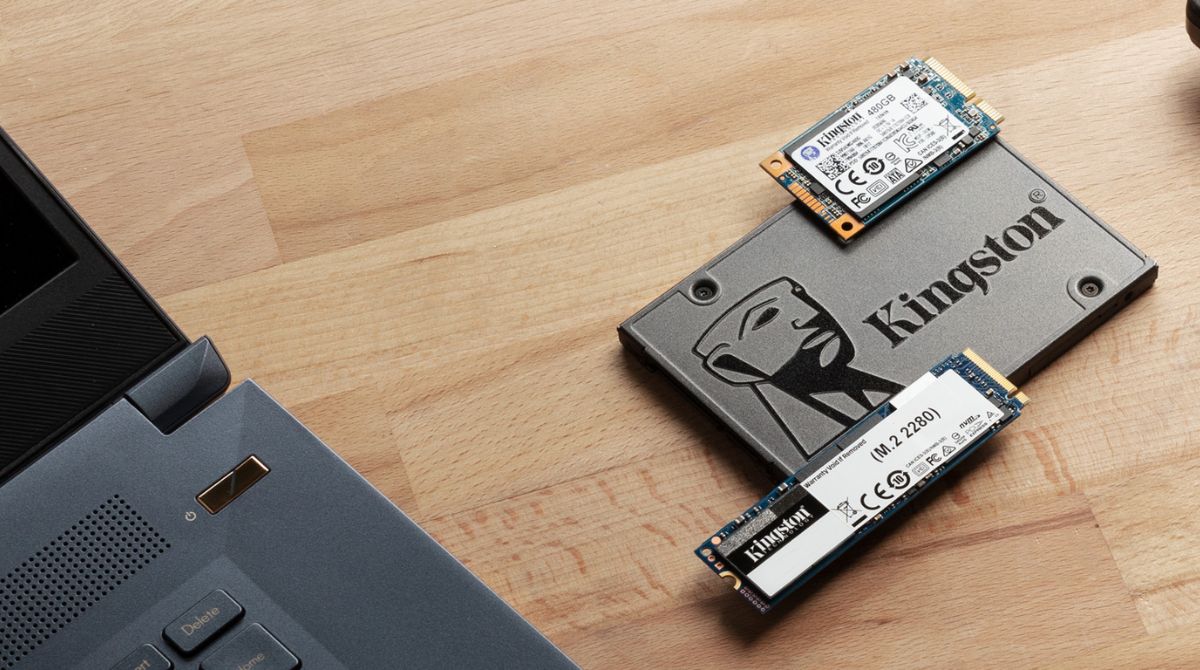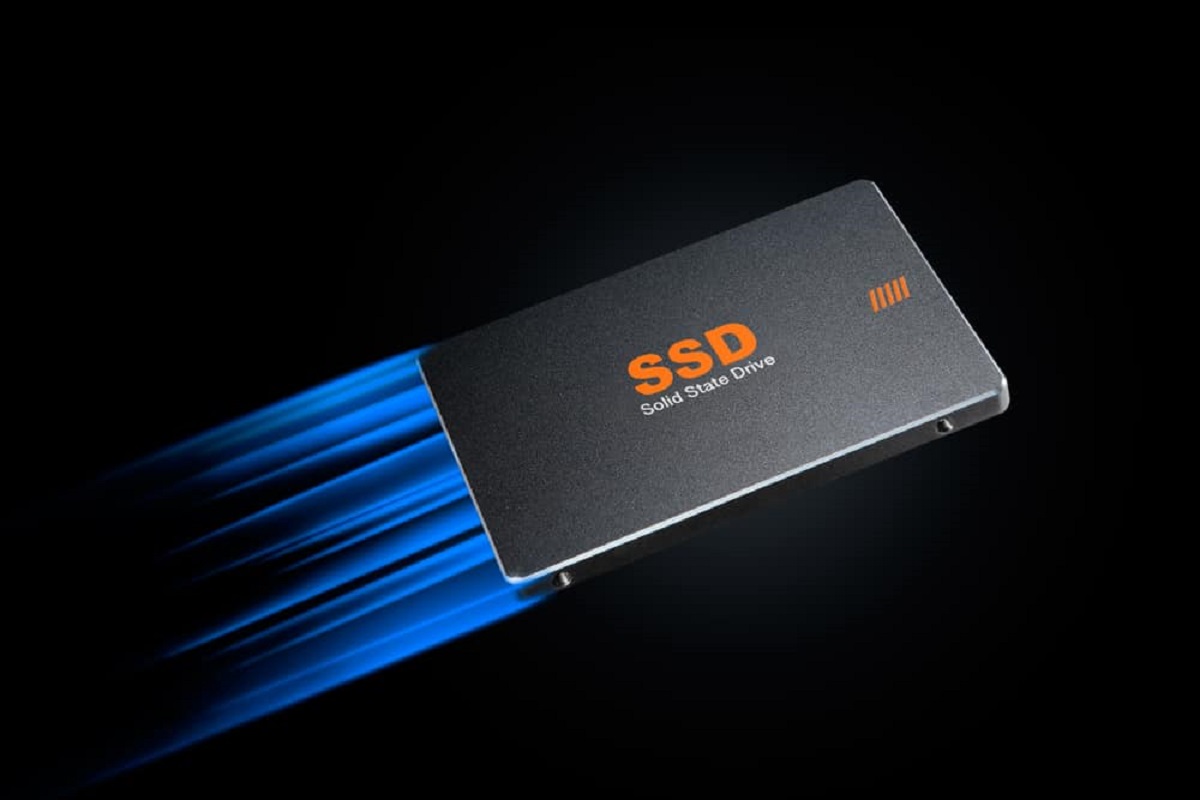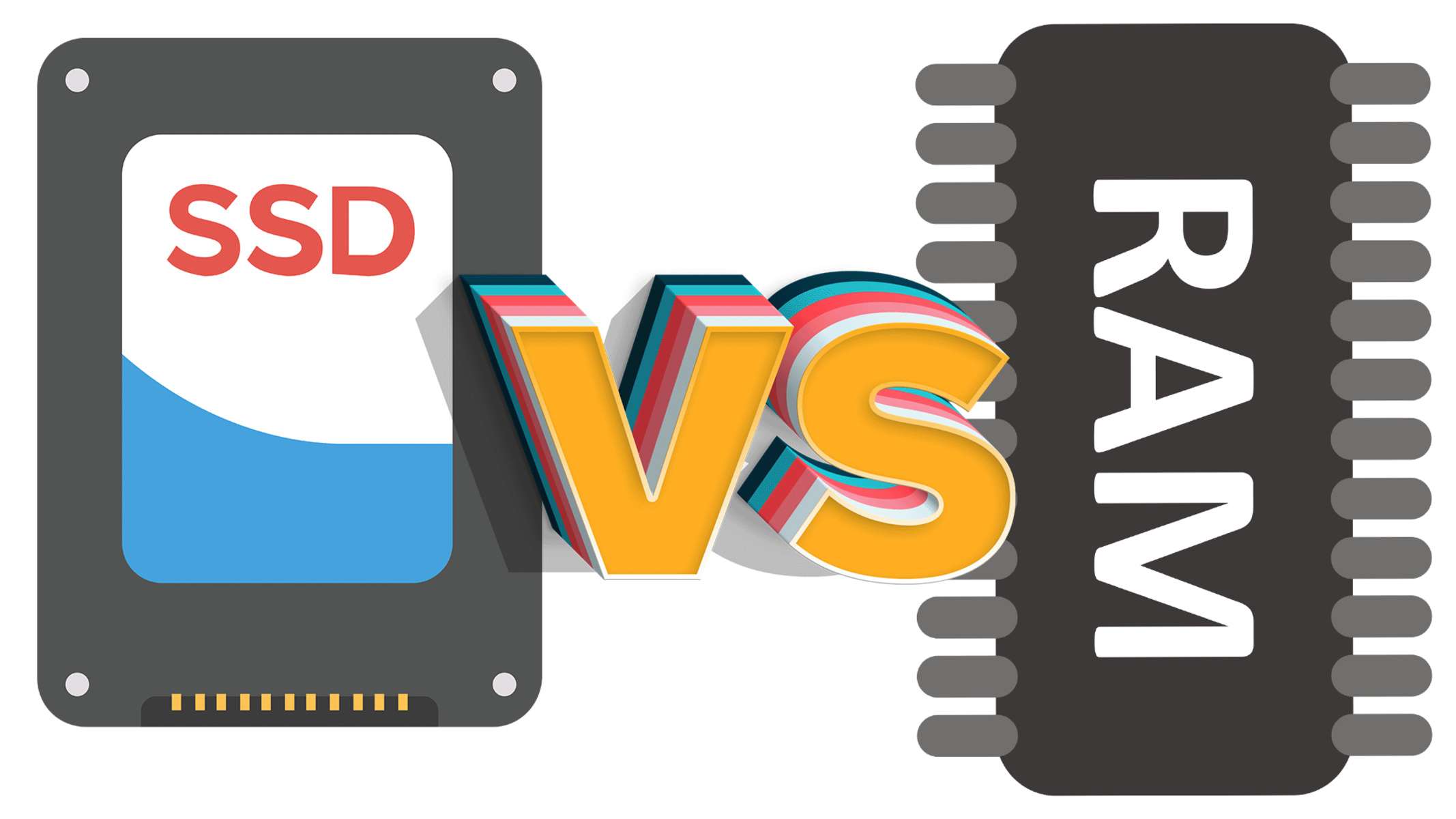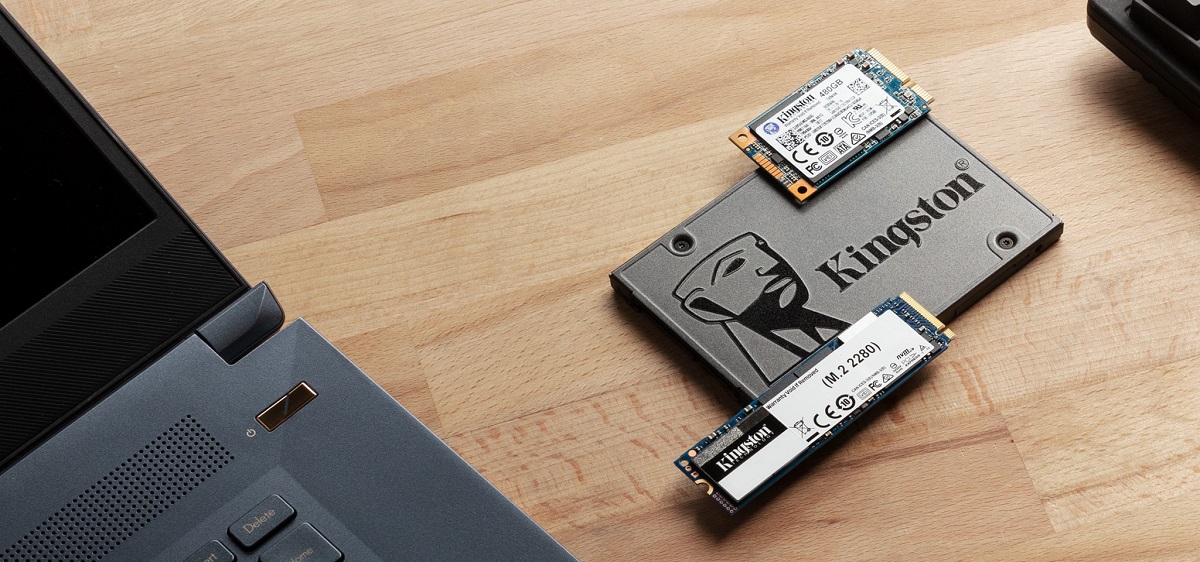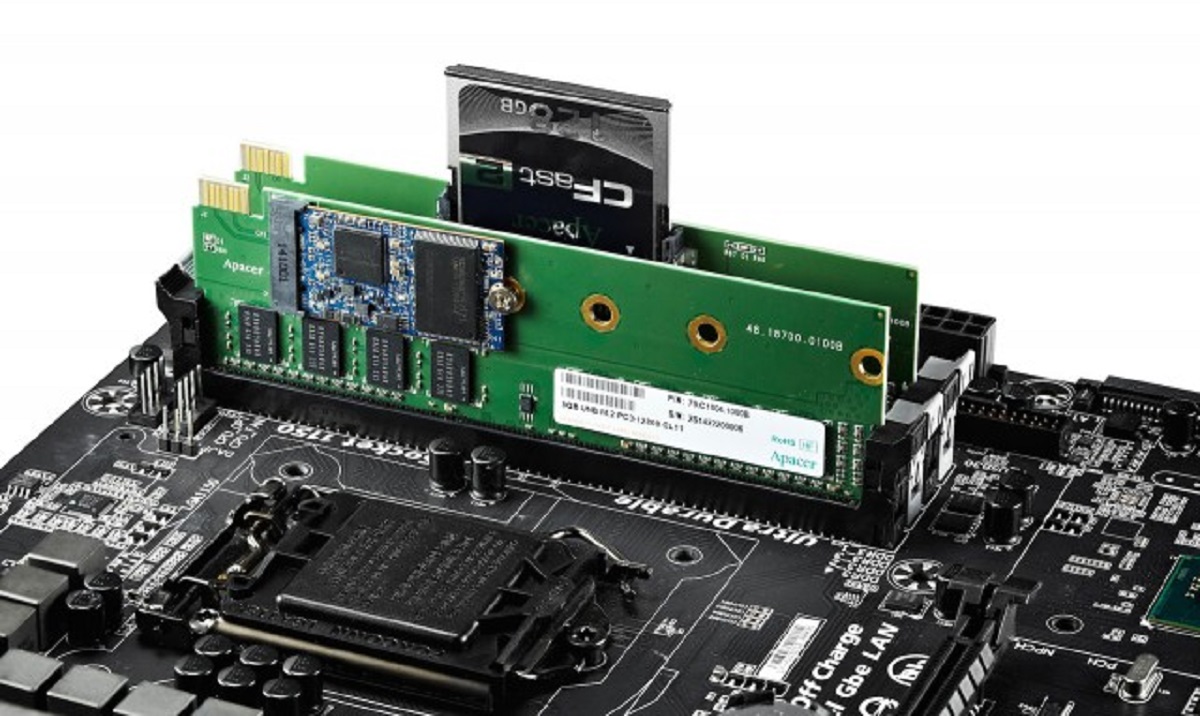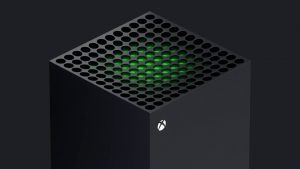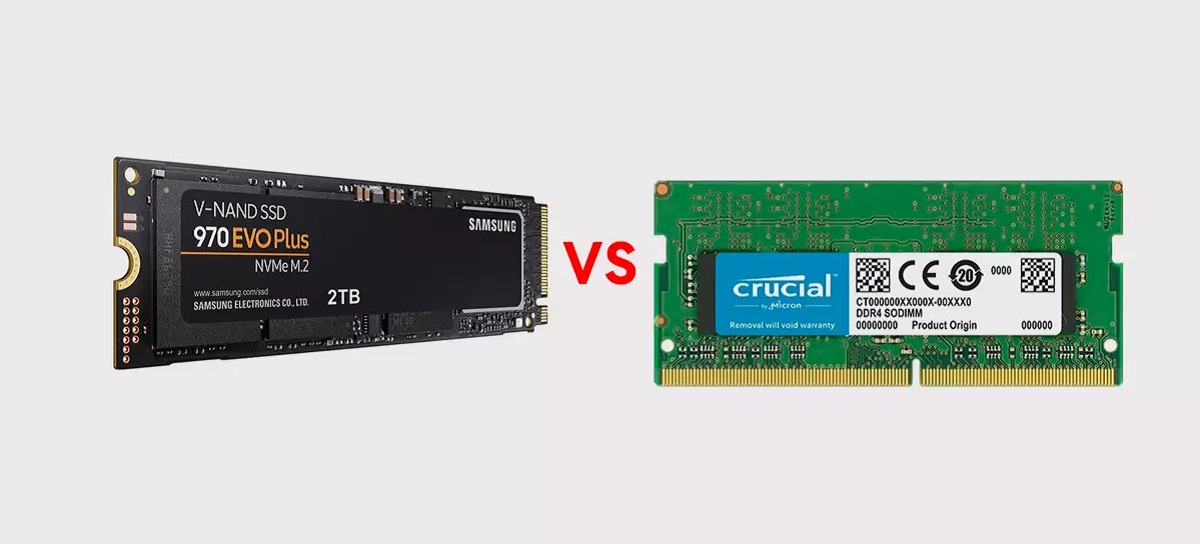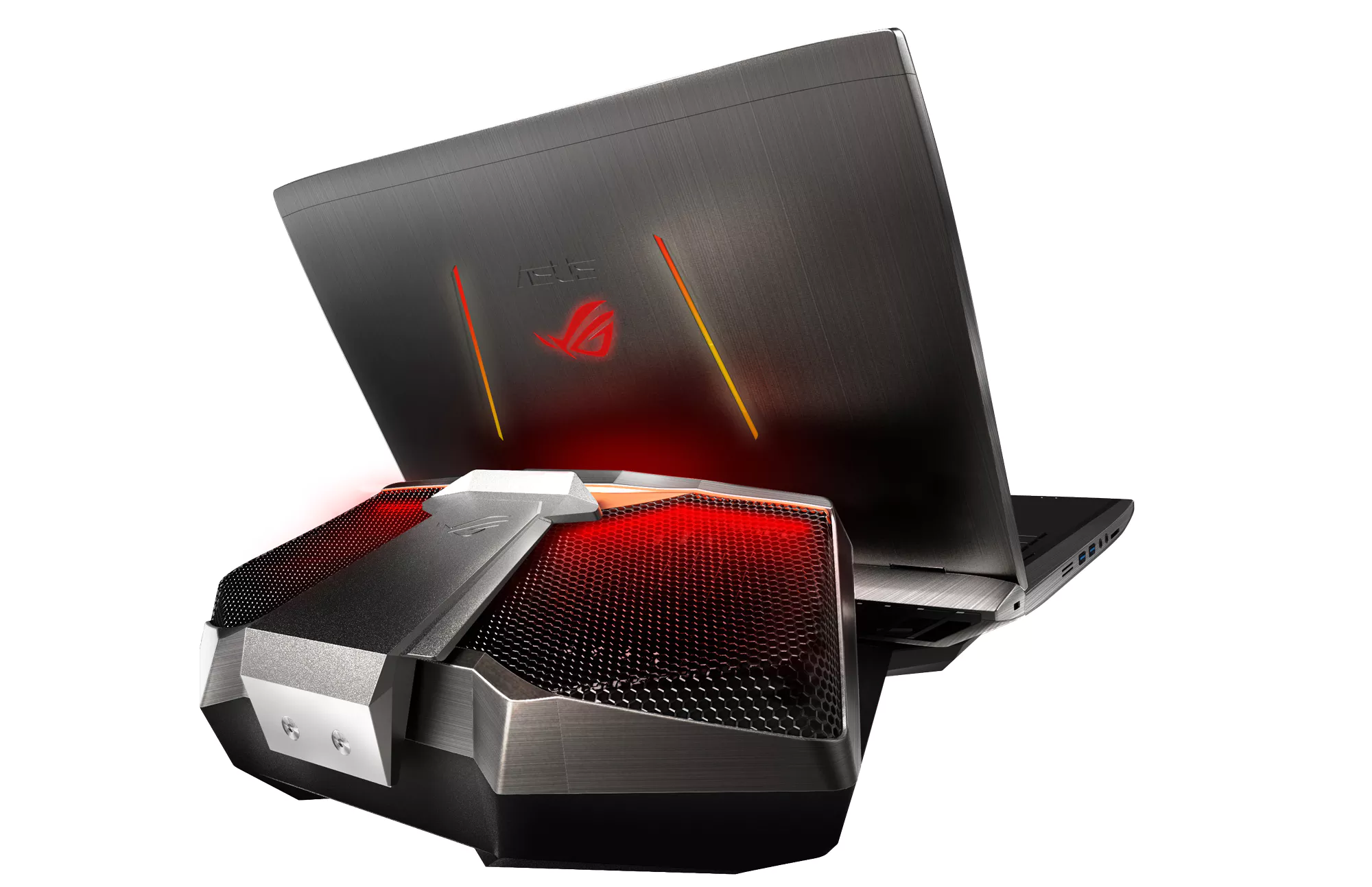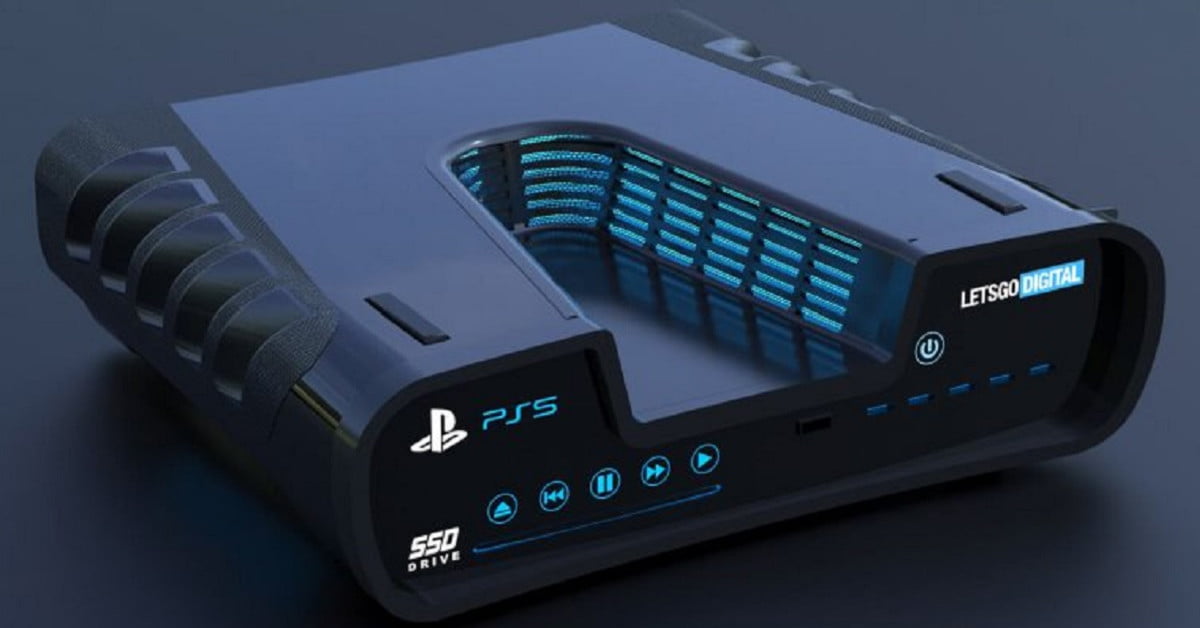Introduction
When it comes to the world of computers and data storage, two terms frequently come up – RAM and SSD. Both RAM (Random Access Memory) and SSD (Solid State Drive) play crucial roles in a computer’s performance and data handling, but they serve different purposes and have distinct characteristics. Understanding the difference between RAM and SSD is essential for any computer user, whether you’re a casual home user or a tech-savvy professional.
RAM, as the name suggests, is a type of memory that enables your computer to access data quickly. It is a volatile memory, meaning that the data stored in RAM is temporary and gets erased once the computer is turned off. Think of RAM as your computer’s short-term memory, where it stores the data it needs for immediate tasks and operations.
On the other hand, an SSD is a storage device that holds your computer’s data for the long term. Unlike RAM, SSDs are non-volatile, meaning the data remains stored even when the power is turned off. SSDs store information on integrated circuits, similar to a USB drive, but with much higher capacity and faster access speeds. These drives are commonly used for storing the operating system, programs, and files on your computer.
Now that we understand the basic definitions of RAM and SSD, let’s dive deeper into the differences between the two and explore their respective strengths and weaknesses. By understanding these differences, you’ll be able to make informed decisions when it comes to upgrading your computer’s performance or storage capacity.
Continue reading to discover the key differences between RAM and SSD, including their performance capabilities, storage capacities, costs, and their specific usage in computers.
RAM (Random Access Memory)
RAM, also known as Random Access Memory, is a crucial component of any computer system. It acts as a temporary storage space that allows your computer to access data quickly. When you open an application or perform a task on your computer, the relevant data is loaded into RAM for immediate access. This enables faster and smoother multitasking and improves overall system performance.
RAM operates at incredibly high speeds, making it an essential factor in determining a computer’s responsiveness. The more RAM your system has, the more data it can store, resulting in improved performance. This is particularly important for tasks that require a lot of memory, such as video editing, gaming, or running multiple applications simultaneously.
RAM is often referred to as “volatile” memory because its contents are erased when the computer is powered off. This means that RAM can’t be used for permanent storage of data or files. However, its temporary nature allows for quick data access and retrieval, making it an essential component for real-time operations.
RAM comes in various types, including DDR3, DDR4, and the latest DDR5, each offering faster data transfer speeds and increased capacities. The amount of RAM you need depends on your computer usage. For basic tasks like web browsing and office applications, 8GB of RAM is usually sufficient. However, for more demanding tasks like gaming, video editing, or graphic design, it is recommended to have 16GB or higher for optimal performance.
In summary, RAM plays a vital role in a computer’s performance by providing fast access to data. It allows for seamless multitasking, improves application loading times, and enhances overall system responsiveness. While its contents are temporary and erased when the computer is turned off, its speed and capacity make it a critical component for efficient data handling.
SSD (Solid State Drive)
A Solid State Drive (SSD) is a storage device that has gained immense popularity in recent years. Unlike traditional hard disk drives (HDDs), which use spinning disks to store data, SSDs utilize flash memory technology for faster data access and improved performance. SSDs have become the preferred choice for many computer users due to their numerous advantages.
One of the main benefits of an SSD is its speed. With no moving parts, SSDs can read and write data much faster than HDDs. This results in quicker boot times, faster application loading, and snappier overall system performance. Whether you’re launching programs, copying files, or accessing large multimedia files, SSDs provide a noticeable speed boost compared to traditional hard drives.
Additionally, SSDs are known for their durability. Since they have no moving parts, they are more resistant to physical shock and vibration, making them less prone to mechanical failures. This makes SSDs an ideal choice for laptops and portable devices that may be subjected to physical jolts or movements.
Another significant advantage of SSDs is their energy efficiency. Unlike HDDs, which require spinning disks and mechanical arms to read and write data, SSDs consume considerably less power. This can result in longer battery life for laptops and lower power consumption for desktop computers, ultimately reducing your energy costs.
SSDs also offer a smaller and lighter form factor compared to traditional hard drives. This makes them ideal for slim laptops and compact desktop systems where space is limited. Additionally, the absence of moving parts reduces noise and vibration, resulting in quieter operation.
While SSDs provide numerous benefits, they also have a few limitations. One common concern is their relatively higher cost per gigabyte compared to HDDs. However, prices have been continuously dropping, making SSDs more affordable than ever before.
In summary, SSDs offer significant advantages over traditional hard drives. They provide faster data access, improved system performance, durability, energy efficiency, and a compact size. As the technology continues to advance and prices become more accessible, SSDs have become the go-to storage option for those seeking optimal performance and reliability.
Differences between RAM and SSD
While both RAM and SSD are important components in a computer system, they serve different purposes and have distinct characteristics. Understanding the differences between RAM and SSD is crucial for optimizing your computer’s performance and storage capabilities. Let’s explore the key differences between the two:
Functionality: RAM is a type of temporary memory that allows for quick data access and retrieval. It stores the data that your computer needs for immediate tasks and operations, but its contents are erased when the power is turned off. On the other hand, an SSD is a permanent storage device that holds your computer’s data for the long term. It allows you to store your operating system, programs, and files, and its data remains intact even when the power is turned off.
Speed: RAM operates at extremely high speeds, offering almost instant data access. It is much faster than any storage device, including SSDs. This fast access to data makes RAM ideal for multitasking and running resource-intensive applications. SSDs, on the other hand, are significantly faster than traditional hard drives but still slower compared to RAM. However, they offer much faster data transfer speeds and improved overall system performance compared to HDDs.
Capacity: RAM capacity is measured in gigabytes (GB) and is typically smaller compared to SSD capacity. RAM is designed to store temporary data, so it needs to be fast and expensive, limiting its capacity. Common RAM sizes include 8GB, 16GB, and 32GB, although higher capacities are available. On the other hand, SSD capacity can vary significantly, ranging from a few hundred gigabytes to several terabytes. This allows for storing a large amount of data, including the operating system, applications, and files.
Cost: RAM and SSD differ significantly in terms of cost. RAM prices have become more affordable in recent years, but they can still be relatively expensive, especially for higher capacities. SSDs, although more expensive than traditional hard drives, have become more affordable and offer better value for their performance and storage capabilities. SSD prices continue to drop, making them a cost-effective option for improving your computer’s performance and storage capacity.
Usage: RAM is essential for efficient multitasking and running resource-intensive applications. It allows your computer to store and access data quickly, resulting in faster application loading times and smoother overall system performance. SSDs, on the other hand, provide long-term storage for your operating system, programs, and files. They offer improved data transfer speeds, increased reliability, and durability compared to traditional hard drives, making them ideal for storing and accessing large amounts of data.
In summary, RAM and SSD are fundamental components of a computer system, each with its own purpose and characteristics. RAM provides fast, temporary storage for immediate data access, while SSDs offer long-term, permanent storage for your operating system and files. Understanding their differences will help you make informed decisions when upgrading your computer’s performance and storage capacity.
Performance
Performance is a crucial factor when it comes to evaluating the capabilities of both RAM and SSD. Understanding how each component contributes to overall system performance is essential for optimizing your computer’s speed and efficiency.
RAM significantly impacts your computer’s performance, particularly in tasks that require real-time data access. With its high-speed capabilities, RAM allows for quick data retrieval and faster application loading times. When you open a program or perform multiple tasks simultaneously, the relevant data is stored in RAM for immediate access, resulting in seamless multitasking and improved responsiveness.
The amount of RAM you have also plays a significant role in performance. Insufficient RAM can lead to a sluggish system, as it restricts the amount of data that can be stored temporarily. This can cause delays in data retrieval and lead to slower overall performance. Upgrading your RAM to a higher capacity can result in better multitasking capabilities and faster application performance.
On the other hand, SSDs contribute to performance primarily in terms of storage and data transfer speeds. Compared to traditional hard drives, SSDs offer significantly faster read and write speeds. This means that data can be accessed and transferred more quickly, resulting in faster file loading times, quicker boot times, and improved overall system responsiveness.
Additionally, SSDs have lower latency compared to traditional hard drives. This means that the time it takes for the system to retrieve data from an SSD is significantly reduced, resulting in a snappier computing experience. Programs launch faster, files open instantly, and overall system performance is enhanced.
When it comes to overall performance, both RAM and SSD work hand in hand to deliver optimal results. RAM ensures quick data access and temporary storage, while SSDs provide long-term storage and high-speed data transfer. Having a sufficient amount of RAM and utilizing an SSD for storage can greatly improve your computer’s performance and productivity.
It’s worth noting that while both RAM and SSDs are essential for performance, they have different roles and functions. RAM focuses on providing immediate data access and temporary storage, while SSDs excel in long-term storage and high-speed data transfer. By leveraging their strengths and understanding how they contribute to overall performance, you can optimize your computer for the best possible experience.
Capacity and Cost
Capacity and cost are important considerations when it comes to deciding between RAM and SSD for your computer system. Both components differ significantly in terms of capacity and their impact on your budget. Let’s explore these factors in more detail.
RAM capacity refers to the amount of data that can be stored temporarily for immediate access. RAM sizes typically range from a few gigabytes (GB) to several dozen gigabytes. The capacity of RAM has a direct impact on multitasking capabilities and system performance. Higher RAM capacity allows for smoother multitasking and faster application loading times. However, more RAM also means higher costs, as larger capacities tend to be more expensive.
In contrast, SSDs provide long-term storage capacity for your operating system, applications, and files. SSD capacity can range from a few hundred gigabytes to multiple terabytes. The larger the capacity of an SSD, the more data it can store. This is particularly useful for users who require ample storage space for large multimedia files, software installations, or extensive datasets. However, as the capacity of an SSD increases, so does the cost. Higher-capacity SSDs tend to be more expensive than lower-capacity ones.
When it comes to cost, RAM prices have become more affordable in recent years, but they can still be relatively expensive compared to SSDs. The cost of RAM is primarily determined by the capacity and the type of RAM (e.g., DDR3, DDR4, or DDR5). If you require large amounts of RAM for resource-intensive tasks such as video editing or gaming, the cost can add up quickly. However, it’s important to note that the price of RAM has decreased over time, making it more accessible for consumers.
On the other hand, SSDs initially had a higher cost per gigabyte compared to traditional hard drives. However, as technology has advanced and demand has increased, the price of SSDs has significantly decreased. This makes SSDs more affordable than ever before, especially when considering the benefits they provide in terms of speed, durability, and energy efficiency. While higher-capacity SSDs are generally more expensive than lower-capacity ones, the cost per gigabyte has become much more reasonable in recent years.
In summary, RAM and SSDs differ in terms of capacity and cost. RAM provides temporary storage for immediate data access, with larger capacities leading to better multitasking capabilities and system performance. However, larger RAM capacities come with higher costs. On the other hand, SSDs offer long-term storage capacity, allowing you to store your operating system, applications, and files. SSDs come in various capacities, with higher capacities being more expensive, although the overall cost of SSDs has become more affordable over time.
Usage in Computers
RAM and SSDs have distinct usage scenarios in computers due to their different functions and characteristics. Understanding how to leverage their respective strengths can help optimize your computer’s performance for different tasks and applications.
RAM, with its fast data access and temporary storage capabilities, is crucial for efficient multitasking and running resource-intensive applications. It allows your computer to store and access data quickly, resulting in faster application loading times and smoother overall system performance. Activities such as web browsing, document editing, and general productivity tasks can benefit from having sufficient RAM. Additionally, tasks that require extensive memory usage, like video editing, graphic design, or running virtual machines, greatly benefit from higher RAM capacities, as it allows for smoother and more efficient workflow.
SSDs, on the other hand, excel in providing long-term storage and high-speed data transfer. They are ideal for storing the operating system, applications, and files that require long-term storage. The fast data transfer speeds of SSDs result in quicker boot times and faster file loading, contributing to an overall snappier computing experience. Additionally, SSDs are highly recommended for applications and tasks that involve large file sizes, such as video editing, gaming, and multimedia production. The high-speed data access of SSDs ensures smooth playback and editing of large media files.
Another important usage scenario for SSDs is in portable devices, such as laptops. The compact size, low power consumption, and durability of SSDs make them an ideal choice for increased mobility and longer battery life. SSDs are less prone to damage from physical shocks and vibrations, making them reliable for on-the-go computing. The reduced noise and heat production of SSDs also contribute to a better overall user experience.
It is worth noting that combining both RAM and SSDs in a computer system can provide a well-rounded performance boost. Having sufficient RAM allows for smooth multitasking and quick access to frequently used data, while an SSD provides fast and reliable storage for the operating system and frequently used applications. This combination ensures optimized performance for a wide range of tasks and applications.
In summary, RAM and SSDs have different usage scenarios based on their functions and characteristics. RAM’s fast data access and temporary storage make it essential for multitasking and resource-intensive applications. SSDs, with their long-term storage capacity and high-speed data transfer, excel in storing the operating system, applications, and large files. Leveraging the strengths of both RAM and SSDs in a computer system can result in optimized performance for a variety of tasks and applications.
Conclusion
Understanding the differences between RAM and SSD is crucial for optimizing your computer’s performance and storage capabilities. Both components play vital roles in a computer system, but they serve different functions and have distinct characteristics.
RAM, or Random Access Memory, provides temporary storage for immediate data access. It allows for quick retrieval and helps with multitasking, resulting in faster application loading times and smoother system performance. Increasing RAM capacity can lead to improved performance, especially for resource-intensive tasks.
SSDs, or Solid State Drives, offer long-term storage and high-speed data transfer. They significantly improve overall system responsiveness, with faster boot times and quicker access to files and applications. SSDs are particularly beneficial for activities such as video editing, gaming, and multimedia production due to their ability to handle large file sizes.
Capacity and cost are important factors to consider when choosing between RAM and SSD. RAM capacity impacts multitasking capabilities, with higher capacities leading to better performance. However, larger RAM capacities come with higher costs. On the other hand, SSDs offer storage capacities that range from a few hundred gigabytes to multiple terabytes. While higher-capacity SSDs can be more expensive, the overall cost of SSDs has become more affordable over time.
Usage scenarios in computers also differ for RAM and SSD. RAM is crucial for efficient multitasking and running resource-intensive applications, while SSDs excel in long-term storage and fast data transfer. Leveraging the strengths of both RAM and SSD in a computer system can result in optimized performance for various tasks and applications.
In conclusion, RAM and SSDs are important components in a computer system, each with their own specific functions and advantages. Understanding their differences and knowing how to leverage their strengths will ultimately lead to a well-rounded computing experience, with improved performance, speed, and storage capabilities.







